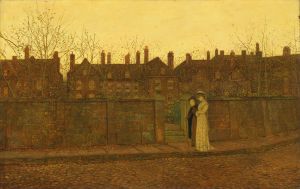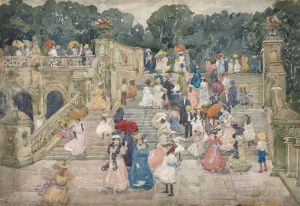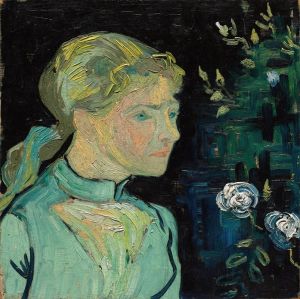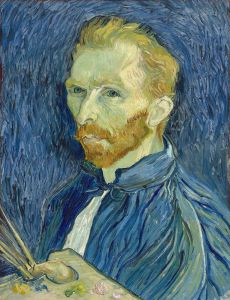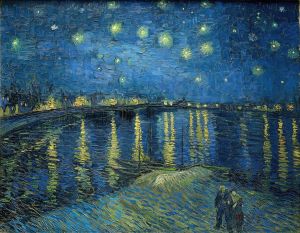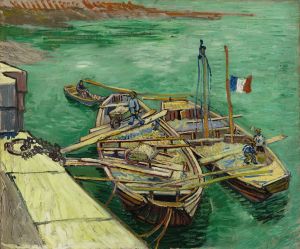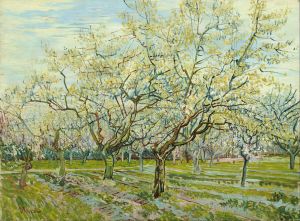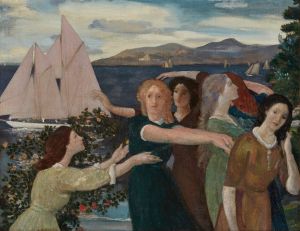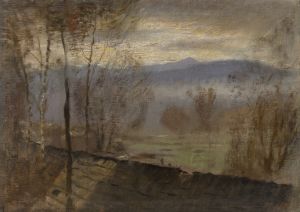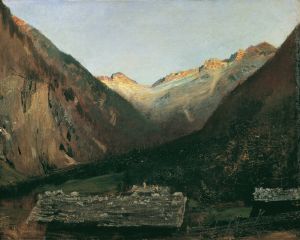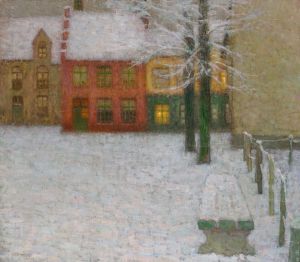
Langlois Bridge at Arles
A hand-painted replica of Vincent van Gogh’s masterpiece Langlois Bridge at Arles, meticulously crafted by professional artists to capture the true essence of the original. Each piece is created with museum-quality canvas and rare mineral pigments, carefully painted by experienced artists with delicate brushstrokes and rich, layered colors to perfectly recreate the texture of the original artwork. Unlike machine-printed reproductions, this hand-painted version brings the painting to life, infused with the artist’s emotions and skill in every stroke. Whether for personal collection or home decoration, it instantly elevates the artistic atmosphere of any space.
"Langlois Bridge at Arles" is a series of oil paintings by the Dutch post-impressionist artist Vincent van Gogh. These works were created during his stay in Arles, in the south of France, in 1888. Van Gogh was fascinated by the rural and urban landscapes of the region, and the Langlois Bridge, also known as the Pont de Langlois, became one of his favorite subjects.
The Langlois Bridge was a drawbridge located on the Arles-to-Bouc canal, which was an important part of the local infrastructure, facilitating transportation and commerce. Van Gogh was particularly drawn to the bridge because it reminded him of the Dutch landscapes of his youth, with their similar drawbridges and canals. This nostalgic connection, combined with the vibrant Provençal light, inspired him to capture the scene in several paintings and drawings.
Van Gogh's depictions of the Langlois Bridge are characterized by their vivid colors and dynamic compositions. He painted the bridge from various angles and at different times of the day, showcasing his interest in the changing effects of light and atmosphere. The paintings often feature the bridge in the context of its surroundings, including the canal, nearby fields, and sometimes figures such as women doing laundry or people crossing the bridge.
One of the most well-known versions of the Langlois Bridge series is "The Langlois Bridge at Arles with Women Washing," which shows the bridge with two women washing clothes by the canal. The painting is notable for its bright, contrasting colors and the way it captures the everyday life of the local people. The bridge itself is depicted with precise, almost architectural lines, while the surrounding landscape is rendered in Van Gogh's characteristic expressive brushstrokes.
Another notable version is "The Langlois Bridge at Arles with Road Alongside the Canal," which presents a broader view of the bridge and its environment. This painting emphasizes the linear perspective of the canal and the road, drawing the viewer's eye into the depth of the scene. The use of bold, complementary colors, such as the blue of the sky and the orange of the earth, creates a striking visual impact.
Van Gogh's interest in the Langlois Bridge extended beyond these paintings. He also created several drawings and sketches of the bridge, which further demonstrate his fascination with the structure and its surroundings. These works provide insight into his artistic process and his ability to capture the essence of a scene with just a few lines and shades.
The Langlois Bridge paintings are significant not only for their artistic merit but also for what they reveal about Van Gogh's state of mind during his time in Arles. This period was one of intense creativity for the artist, marked by a prolific output of works that included some of his most famous paintings. The Langlois Bridge series reflects his deep engagement with the landscape and his desire to find beauty in the everyday scenes around him.
Today, the Langlois Bridge paintings are held in various collections around the world, including the Kröller-Müller Museum in Otterlo, the Netherlands, and the Wallraf-Richartz Museum in Cologne, Germany. They continue to be celebrated as exemplary works of Van Gogh's unique artistic vision and his ability to transform ordinary subjects into extraordinary works of art.






